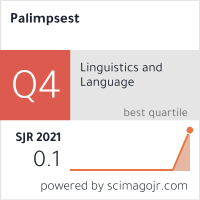CULTURAL SUSTAINABILITY AND ARCHITECTURAL HERITAGE
DOI:
https://doi.org/10.46763/PALIM21116227nAbstract
Conservation and reuse of neglected historic buildings can play a major role in the regeneration process while satisfying the need for new buildings. The benefits of increasing the number of revitalized historic buildings in the old cores are widely known to help achieve sustainability goals. Understanding and accepting the potential socio-economic and cultural opportunities that historic buildings offer will help achieve these goals. Many buildings that have lost their original function are being converted into useful spaces with a new function, so through this reuse a large part of the old settlements are revitalized, encouraging them to a sustainable social and economic space. Recommendations are presented for increasing the private capital in the cultural heritage objects, ensuring the preservation of the cultural heritage as well as the achievement of the goals for sustainable development. This paper explores the possibilities for promoting the re-use and renovation of buildings, which includes their strengthening and adaptation to sustainability of buildings in Skopje since the beginning of the 20th century.
Keywords: central core, conservation, cultural heritage, cultural sustainability.


